Church of the Monastery, the third temple
The church is the central place of the monastic liturgy, where the monks prayed eight times a day to celebrate the Divine Office and where they welcome the people to the major feast days. It is also a compendium of Romanesque, Gothic and baroque art. Since 1833 it has housed the local parish of Sant Pere d’Octavià.
The current temple is the Monastery’s third. The first was the early Christian church, where tradition says that the relics were kept of Cugat the martyr; the early monastery was built around it. After the year 1000 this temple was replaced by another much bigger one, Romanesque, similar to Sant Vicenç de Cardona. In the early 12th century it was desecrated by an Almoravid attack. This led to the construction of the third temple, completed around the mid-14th century. The slow construction of the temple meant that it was started in Romanesque style and ended up with a fully Gothic façade. So the current church of the Monastery is the best sample of the transition of architectural styles in medieval Catalonia.
Façade of the Church
Due to its size, the proportions of the main entrance and large dimensions of the rosette, the façade of the monastic church of Sant Cugat is one of the most attractive of Catalan Gothic art.

Portal
The monks wanted to give the church a large entrance to symbolise the wealth and importance of the Monastery but it also had to be sober enough to express monastic austerity. The solution was to create a new body attached to the façade to give it more depth and enable the placement of 11 pointed and decreasing niches supported by columns with elegant vegetal capitals to show off the temple entrance.
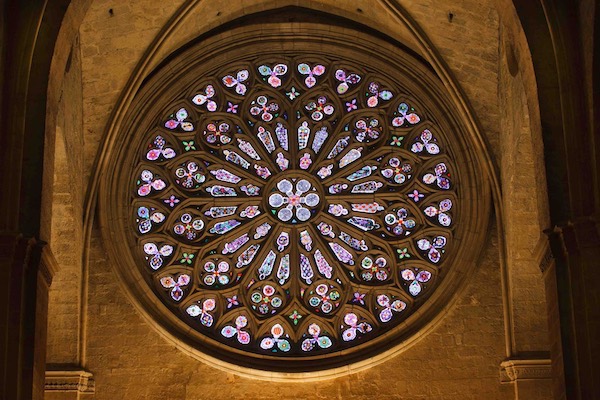
Rosette
The big circular window on the façade is probably one of the most valuable treasures of the Monastery. The rosette’s radial space is an exceptional place to insert scenes from biblical history that, seen from inside the church, shine thanks to the stained glass pieces that fliter the light. This is one of the great contributions of Gothic art to the history of western architecture.
Transition from Romanesque to Gothic Styles
During the two centuries of the work on the monastic church, there was a change between the Romanesque and Gothic architectural systems, a circumstance that gave pause to the master builders, with some rectifications to existing parts.
The first construction phase, in the 12th century, included the apses and the first two sections of vaults, separated by rounded arches. The works then stopped for about half a century and were resumed with Gothic forms, distinguished by pointed arches and much larger windows. A lantern-shaped octagonal crossing tower rises above the Romanesque transept, covered by the intersection of four pointed vaults closed by a keystone, which contains the image of God in Majesty. The windows are of a very early Gothic style with tree-shaped divisions.
The best example of the transition from Romanesque to Gothic is in the differences in the location of the impost of the formerets on each of the four pillars of the transept. Looking at those closest to the apse, the impost of the right formeret is lower than the one on the left. On the opposite side, the right formeret maintains the lowest level, indicating that it follows Romanesque style. However, the pillar extends in height and a second Gothic impost appears at the base of the pointed arches.
All the changes made during the transition from one construction system to another involve changes in the structural behaviour of the last three sections; in addition, to compensate for the greater pressure, a fourth single nave was added inside and aligned with the bell tower outside.
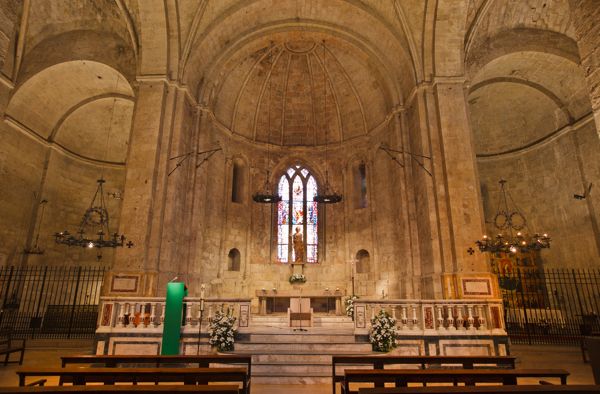
Apse
The back of the church comprises three Romanesque apses. All three feature a set of architectural elements of interest that help better interpret the uses of the monastic site in the past and its architectural evolution. The left side apse is perfectly semi-cylindrical and flat inside.
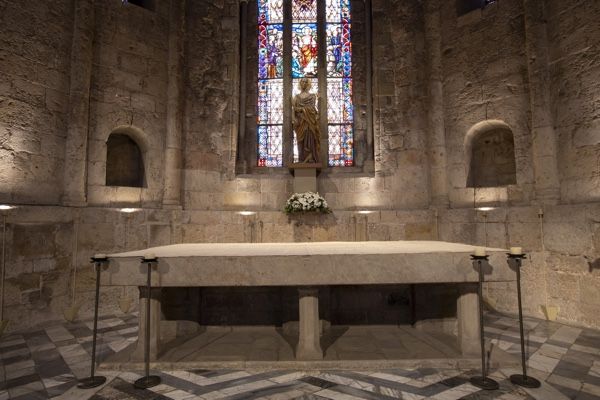
Presbytery
The church’s presbytery has undergone several transformations in accordance with the liturgical changes and artistic currents of each time. Its current appearance surrounded by a neoclassical balustrade is the result of the reform carried out by Abbot Montero in 1798.
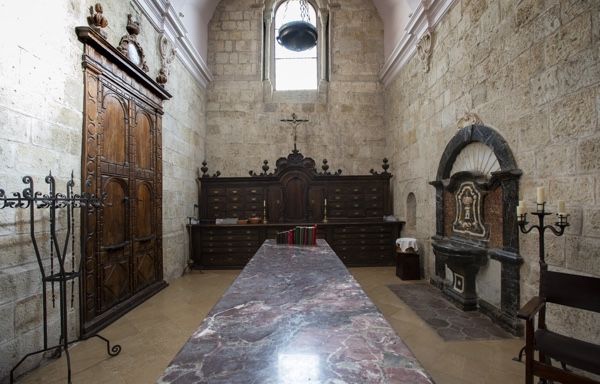
From chapel of All Saints to new Sacristy
The space occupied by the current sacristy originally corresponded to the Chapel of All Saints. Its construction was ordered by Abbot Guerau de Clasquerí, who in 1290 created the benefice of All Saints. He is buried here, where the lid and lauda of his ossuary is still preserved
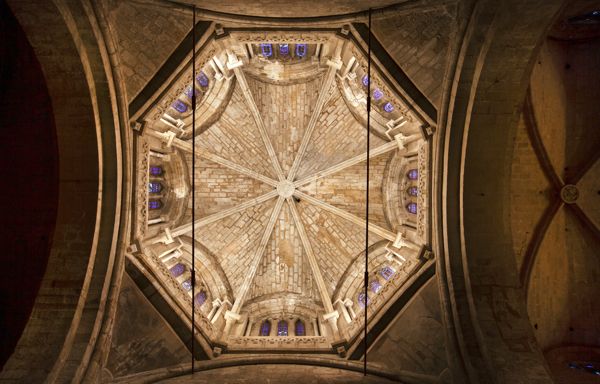
Dome
In churches, the space where the central nave crosses the transept is usually covered by a dome. The passage from the square space of the ground to the higher circle of the roof symbolises the passage from Earth to Heaven.